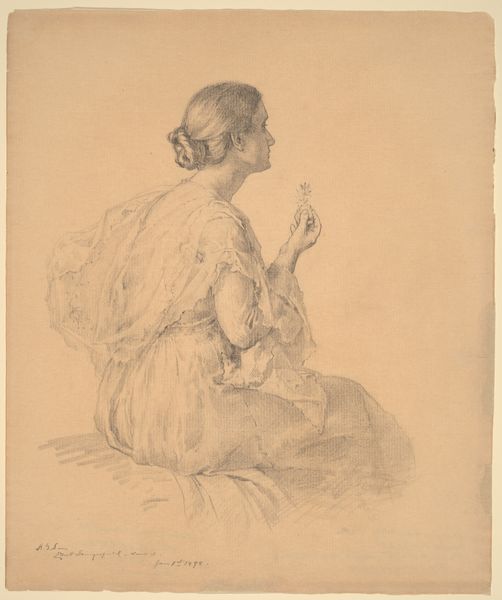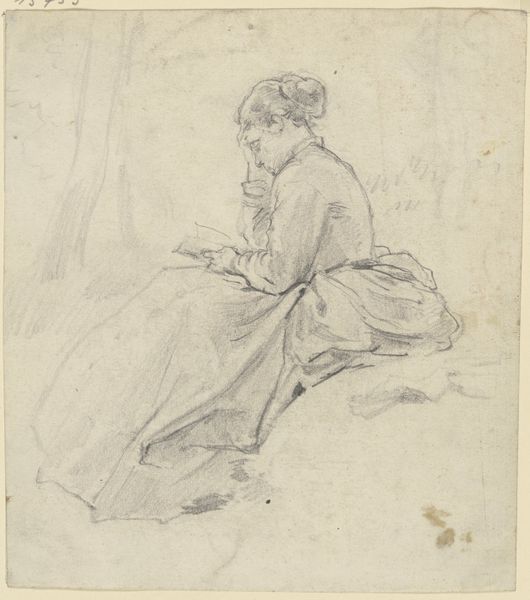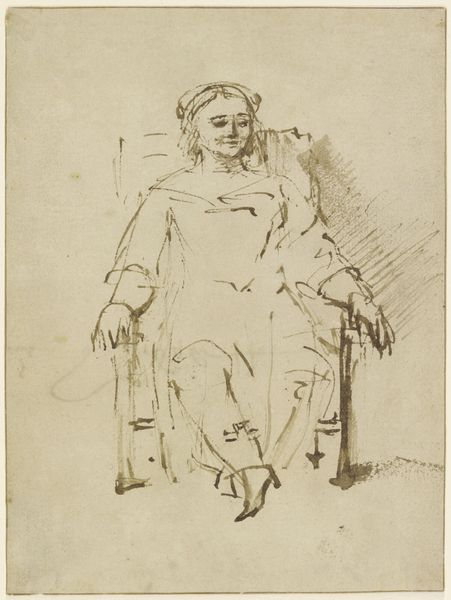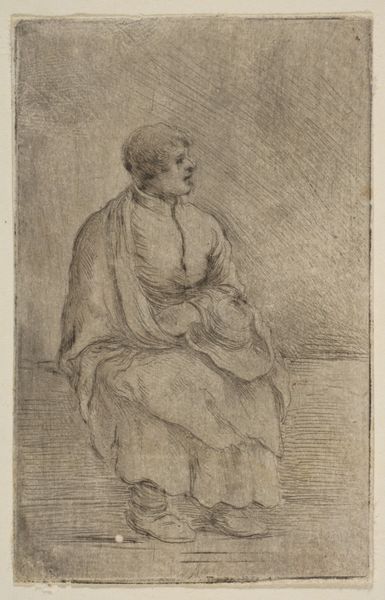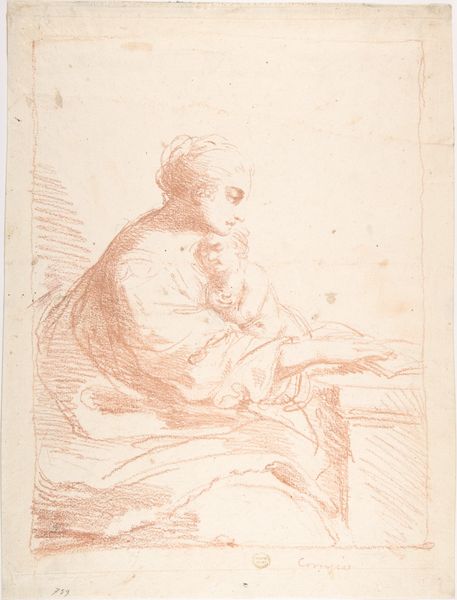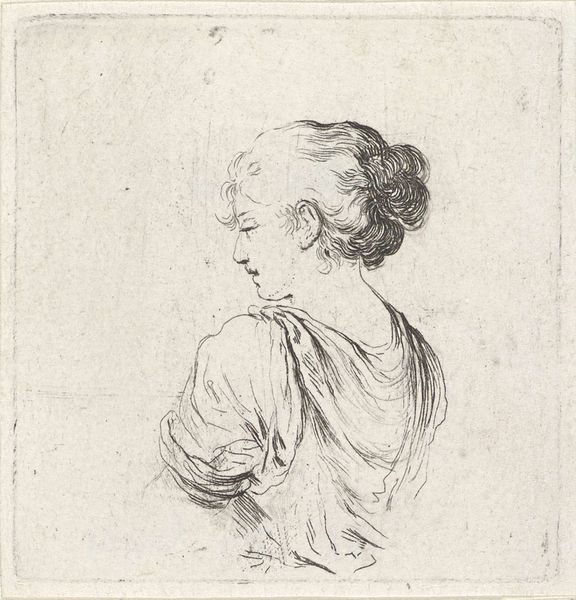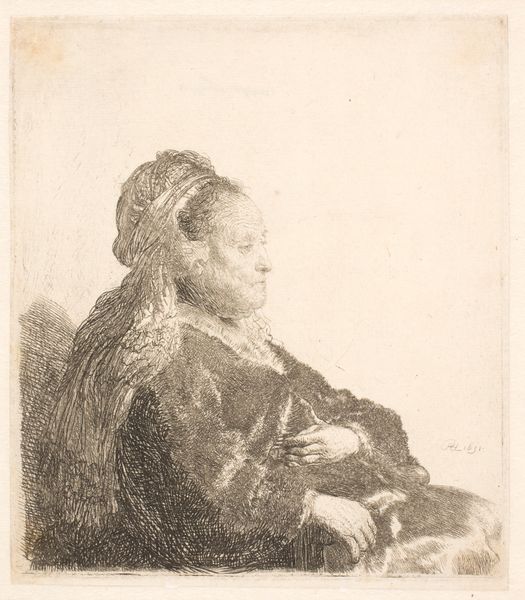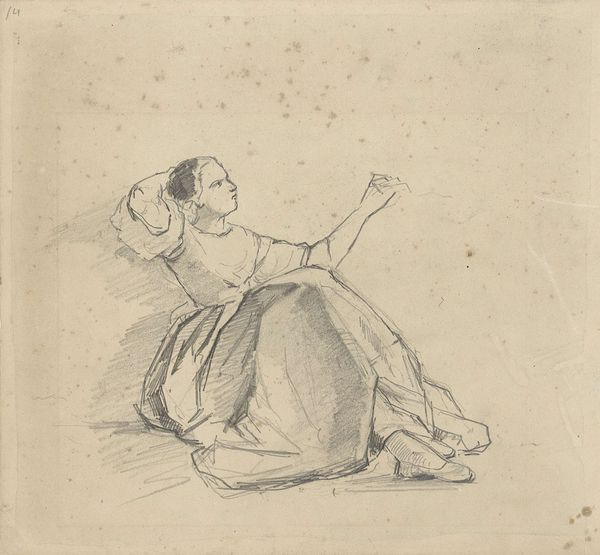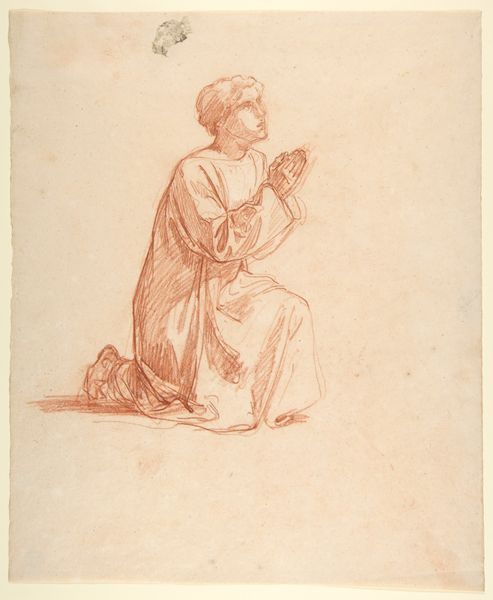
drawing, print, gouache, paper, ink, pencil, graphite, pen
#
drawing
# print
#
gouache
#
paper
#
ink
#
pencil
#
graphite
#
pen
#
genre-painting
#
academic-art
Dimensions: 211 × 254 mm
Copyright: Public Domain
Curator: Here we have “Barefoot Woman Seated on Ground,” a drawing of undetermined date by Jean-Baptiste-Siméon Chardin. The artwork, held here at the Art Institute of Chicago, utilizes pen, ink, graphite, pencil, and gouache on paper to capture a quiet, intimate moment. Editor: The first thing that strikes me is the intimacy and informality. The soft grey tones and the casual pose—there’s something very gentle about it. A welcome absence of the usual theatrical posing! Curator: Precisely. Chardin, who emerged during a time dominated by grand history painting, instead turned his attention to the domestic sphere. His work, especially pieces like this, granted dignity to the everyday lives of women. Let's think about labor, social class and bare feet in relation to these times. Editor: Yes, but how radical was it *really*? Genre paintings like this one, particularly depicting women, could still be read through the lens of male viewership and the art market’s patriarchal structures. It may portray a mundane scene but in many respects it is still reinforcing gender norms. Curator: That's an important consideration. Though this appears candid, Chardin was masterful at constructing images for public consumption, very careful to show the sitter engaged with either work, thought, or the viewer themselves. It reminds us how much power rests in artistic choices. Who gets to be seen, how they're seen and by whom? Editor: And look at the use of light. There’s almost a photographic quality to it—the way it defines the folds of her dress, the shadows on her face. Even if staged, it’s undeniably captivating. I keep thinking about contemporary artists who use similar techniques to deconstruct social narratives today, like questioning notions of female passivity. Curator: Indeed. Chardin's influence echoes through art history, shaping the genre painting tradition as well as informing the socio-political commentary in artwork. Ultimately, this drawing acts as a point of departure to contemplate art's intersection with culture. Editor: It’s been an enlightening experience; thank you for pointing out these threads within and beyond Chardin’s artwork. Curator: My pleasure. Seeing the piece through another perspective, in turn, makes me more informed, as well.
Comments
No comments
Be the first to comment and join the conversation on the ultimate creative platform.

